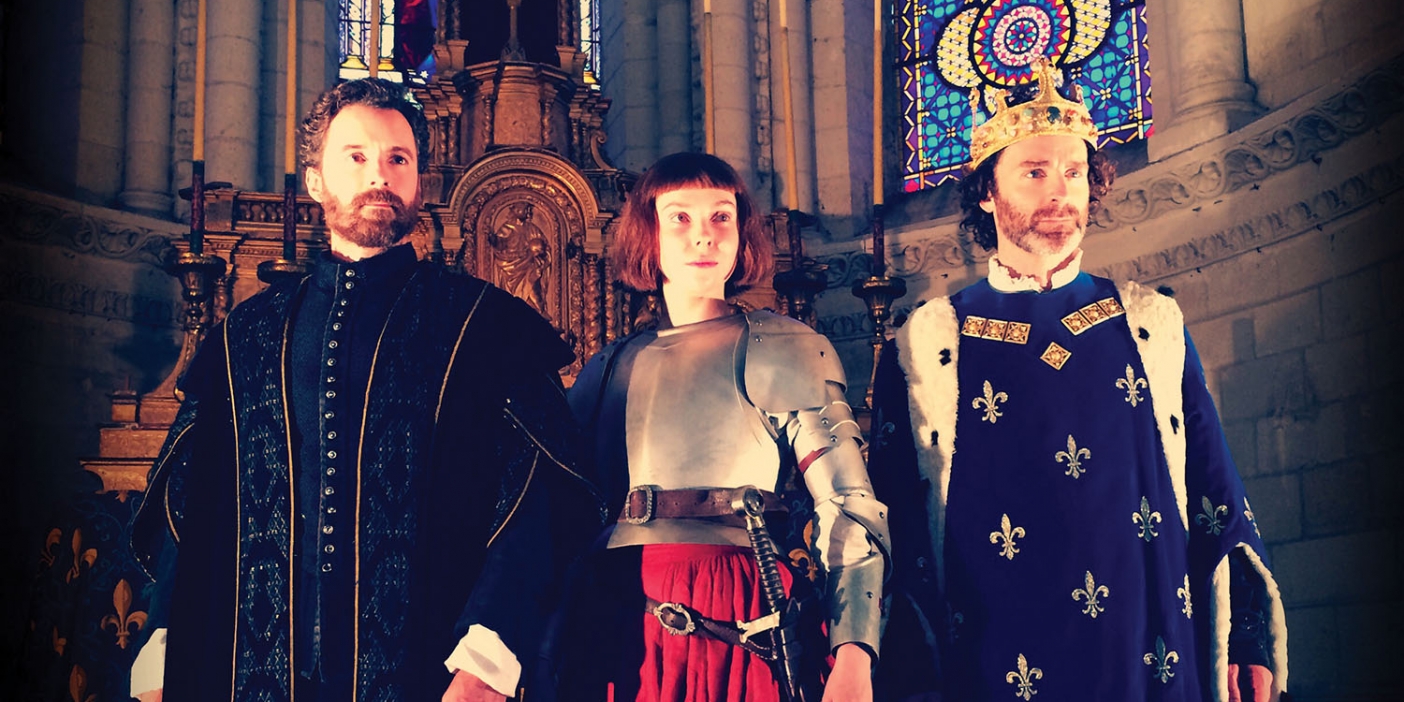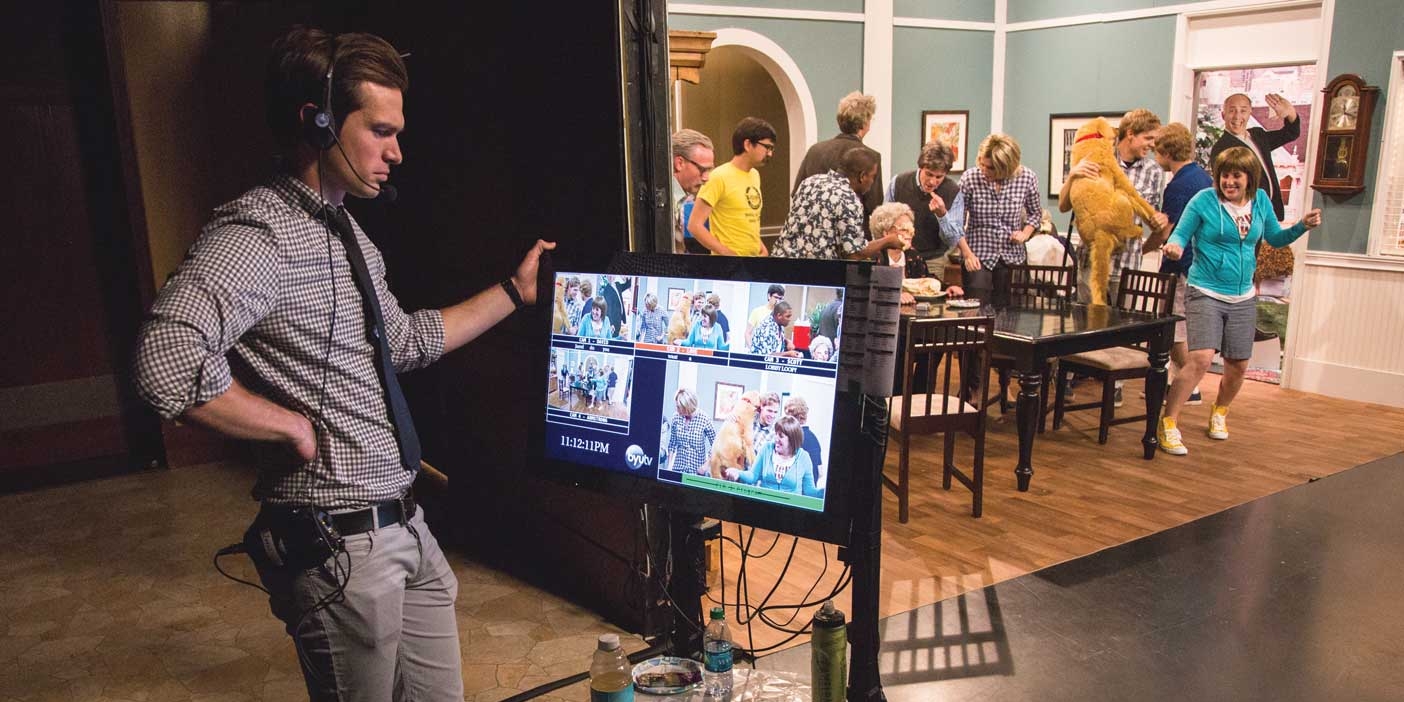Seen the Good?
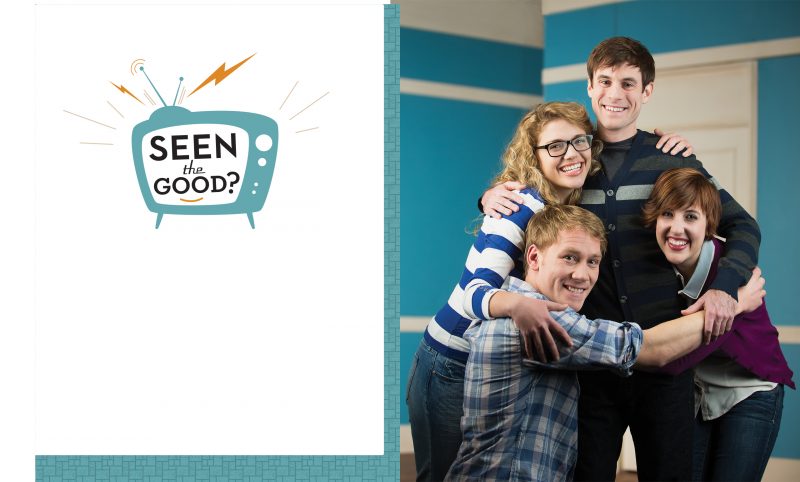
Seen the Good?
If you haven’t watched BYUtv lately, you might be surprised. Get a preview of shows that are helping millions of viewers see the good in the world.
By Lisa Ann Jackson Thomson (BA ’95, MA ’98) in the Spring 2013 Issue
Maybe it’s the shoulder angel. Perhaps it’s the mysterious metal falling from the sky in a Cold War–era drama. It could be rockumentaries. Whatever people are coming to BYUtv for, they are coming in the millions. If you believe Nielson Ratings, web stats, viewer e-mails, regional Emmy Awards (11 of them in 2012), and fan-produced Christmas videos, something is going right at BYUtv.
Longtime viewers will have seen the evolution. You might call it a coming of age. BYUtv managers call it an inspired change of course. While BYUtv was initially established to connect alumni and friends to campus, the recent effort is to focus less inward on BYU and the Church and more outward. In other words, BYUtv has been charged to create programming that is “virtuous, lovely, and of good report—and relevant to good people of all faiths,” says Scott H. Swofford (BA ’79), director of content for BYU Broadcasting. The new direction is captured in the channel’s tagline: See the Good in the World.
But there is another objective as well: “It has to be watchable,” says Derek A. Marquis (BA ’88, MBA ’03), BYU Broadcasting’s managing director. BYUtv’s research shows that while people say they want to be uplifted and edified when they watch TV, what they really want is to be entertained.
That means BYUtv’s focus has shifted from lectures and conferences to documentaries and dramas, and the schedule contains fewer devotional repeats and more original shows. You’ll still find faith-based programs, such as the acclaimed Fires of Faith miniseries about the creation of the King James Bible. And you can watch more BYU sports on BYUtv than anywhere else. But in BYUtv’s primetime lineup, comprised of all original programs, you’ll also find regional-Emmy winners American Ride and The Story Trek and the channel’s most-viewed series, Studio C. In April the channel premiered its first scripted drama, Granite Flats. These shows have little to do with BYU or the Church. They just make good television the whole family can watch.
“Humans will not give up entertainment,” says Swofford. “But what if we could entertain them and then point them toward edification?”
That’s the goal. So sit back, relax, and enjoy a preview of a few top BYUtv shows. And if you come away feeling good about the world, then better still.
Looking to the Stars
It was late and the sky was dark, framed by the window of the classroom. James P. Shores (BA ’11) was lying on the floor, under a table, looking up at the table, looking out at the stars. It shouldn’t have been a particularly inspirational moment. He was tired. He’d been at the school for hours. He had flopped down to take a break.
Shores’ wife, a fourth-grade teacher, had recruited him to help collate worksheets for her class. Shores was a BYU film student at the time and needed to do a short film project for a class cosponsored by BYU Broadcasting. Lying under the table, tired of collating, some thoughts came. A young child, maybe 7 years old. Lost his father. How did he lose his father? Outer space. NASA. A test pilot. Hiding under the table. His thinking place. His hiding place. Trying to understand where he went, what happened. Will he come back? His mother struggles. They don’t talk. The boy draws pictures under the table. Stars. Comets. Dad.
“I was just lying there relaxing for a minute. That’s when a lot of it kind of hit me, some of the names and the ideas,” Shores recalls.
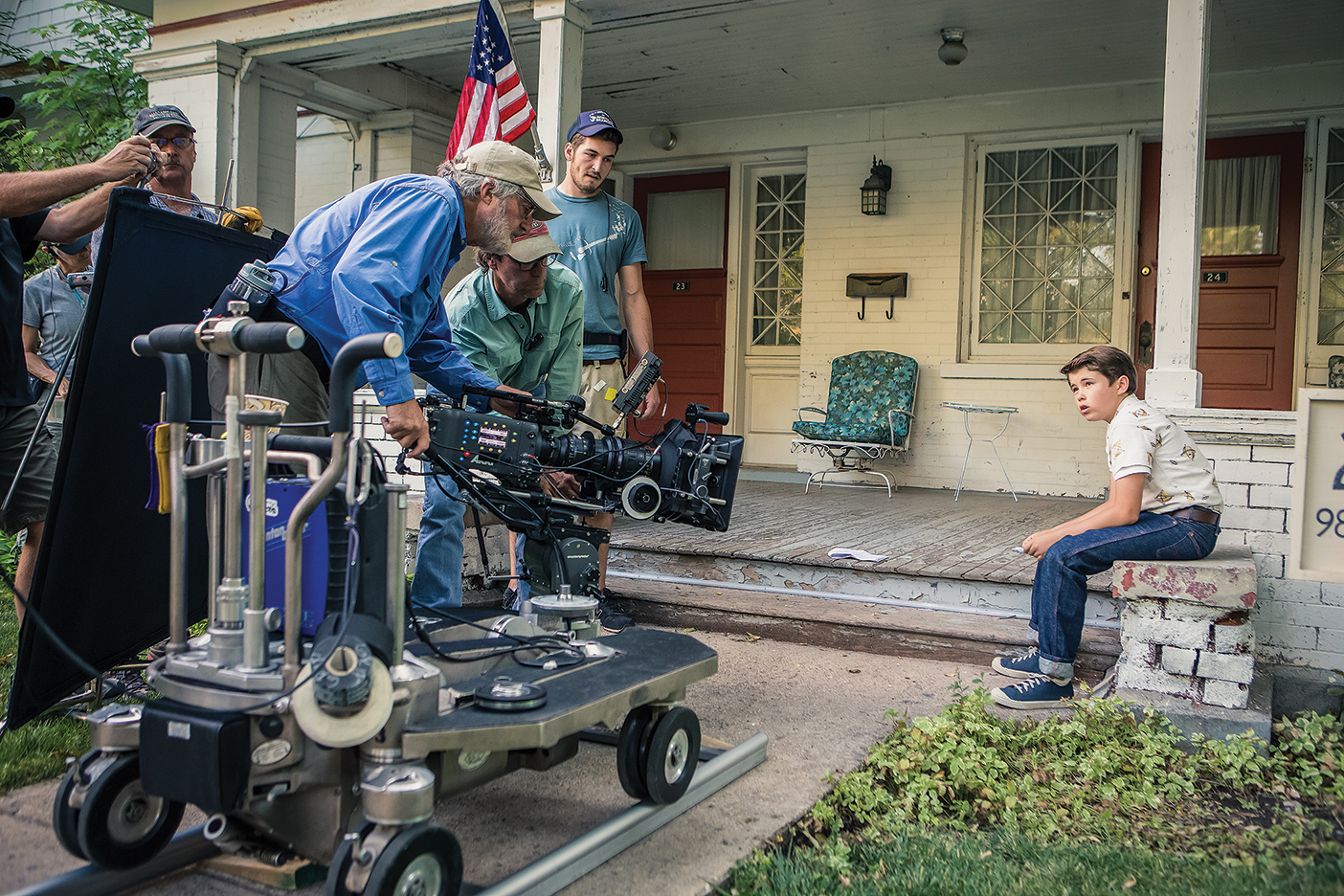
Those flashes of late-night inspiration became his 30-minute film project, “Heaven under a Table.” And that short student film provided the inspiration for just what BYUtv was looking for: its first scripted drama.
“We studied industry trends, and the reality is very few networks are built on reality television. Almost all new media outlets make a mark for themselves with scripted drama,” says Swofford.
So Shores and Swofford worked together to expand the concept of Shores’ short film into a drama series. With adjustments to the setting and backstory and after fleshing out the boy’s world, Shores finally had a script for the pilot episode of a series called Granite Flats.
With 30 years of industry experience, Swofford knows a few people. On a 2012 trip to New York, Swofford made a visit to a top film-industry producer and shared the script. The producer was impressed and asked who had written it. “You won’t believe me if I tell you,” Swofford said. When he revealed that the writer was a student, the producer was amazed, so amazed he lent some of his team members to the project. With this help, Swofford was able to engage top writers, actors, and other industry professionals from New York and Los Angeles.
“From scripting to cast to editing, the show has benefitted from mentoring and involvement at the highest levels of Hollywood,” says Swofford.

The series, set in the early 1960s in the fictional town of Granite Flats, Colo., is filmed in several Utah locations. One of those spots is the Olmstead, an old power plant at the mouth of Provo Canyon. Another is an abandoned portion of main street in Magna, which BYU Broadcasting transformed into the main street of Granite Flats. The show has also built sets in the Salt Lake soundstage once used by the TV show Touched by an Angel.
In the opening scene of the series, an old station wagon pulls a U-Haul trailer on a dark mountain road. Mom is at the wheel and her son, Arthur, about 12 years old, is in the back seat looking out at the moon. They finally arrive. It’s late. As Arthur drags a suitcase toward his new home he sees a bright object sail across the sky. He thinks it’s a comet, and as he settles into his room he tells his dad about it. But his dad is not there. He was a test pilot who was killed just two months earlier. Arthur is looking out his window, talking to the stars.
“It’s the idea of trying to understand who your father is,” says Shores as he describes the relationships of the characters throughout the show.
Soon Arthur makes friends—a smart girl and an eager boy—and makes an enemy of the school bully. His mother makes friends, too, with a fellow nurse at the military hospital and with some of their patients. But metal falling from the sky, a nearby explosion at the height of Cold War tensions, and lurking G-Men indicate there is more to this little town than meets the eye.

“It’s kind of a cross between Super 8, The Wonder Years, and Twin Peaks,” says Swofford, who serves as executive producer of the series.
The series premiered in early April, and Swofford hopes Granite Flats’ entertainment value will draw viewers in and the compelling narrative and themes will keep them there.
“Hopefully, when people get into it and get invested in these characters and the way that they act, they’ll feel something different,” says Swofford. “And that will lead them to personal exploration, which is where we’re trying to send them.”
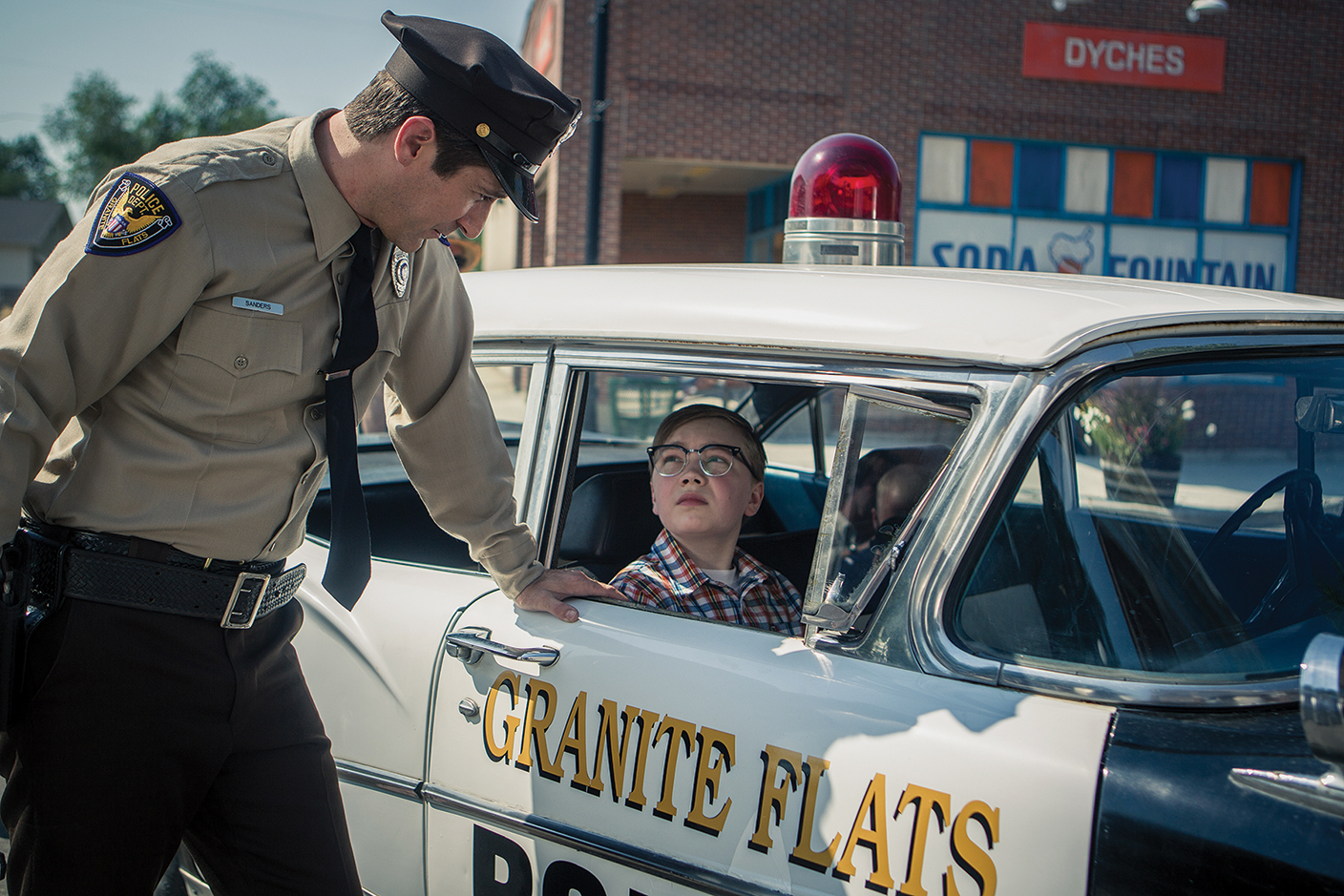
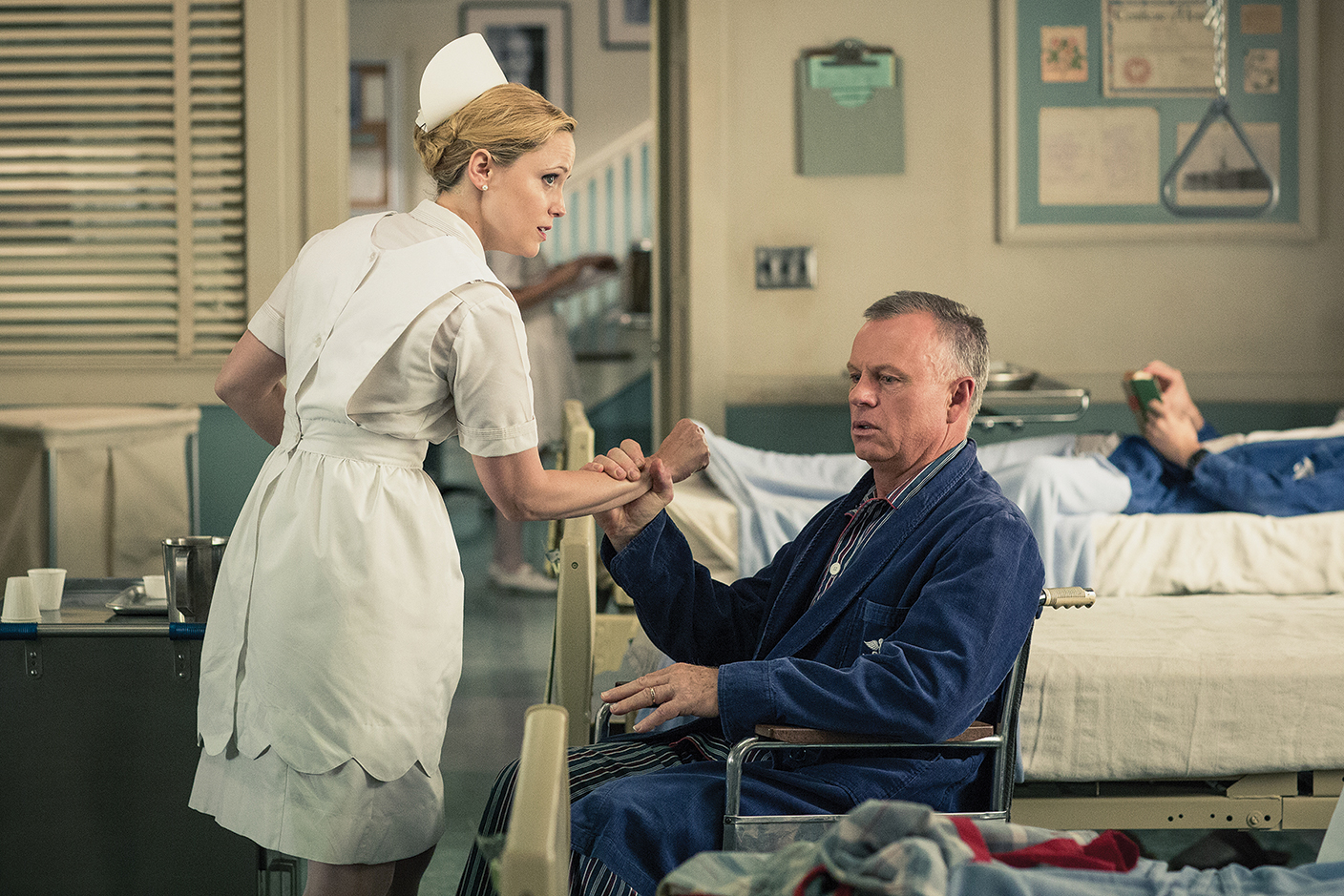
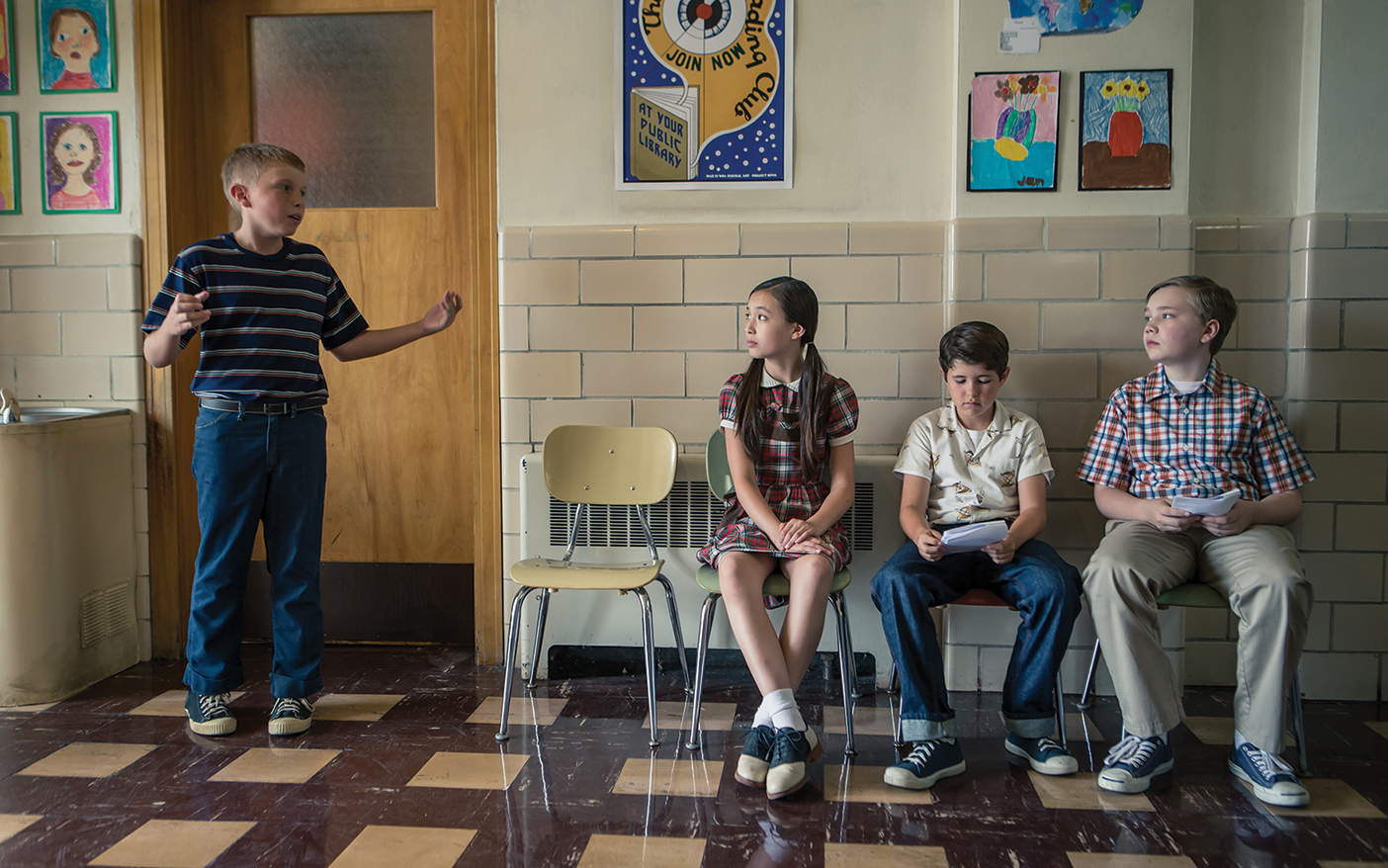
Studio C
C Is for Comedy
There is a bustle of activity in the home video. The kids are still in their PJs and have bed-head hair. Squeals of delight and gasps of anticipation punctuate the ripping and crinkle of wrapping paper. They are surrounded by a video game, some rollerblades, Legos. The usual fare for a Christmas morning. Then the mother lode.
“How did you get these?!” asks one of the girls in disbelief.
“I’m going crazy!!’ screams her older sister, hands on her head in utter disbelief. “I love you!!”
Tickets to Disneyland? An iPad? A pony?
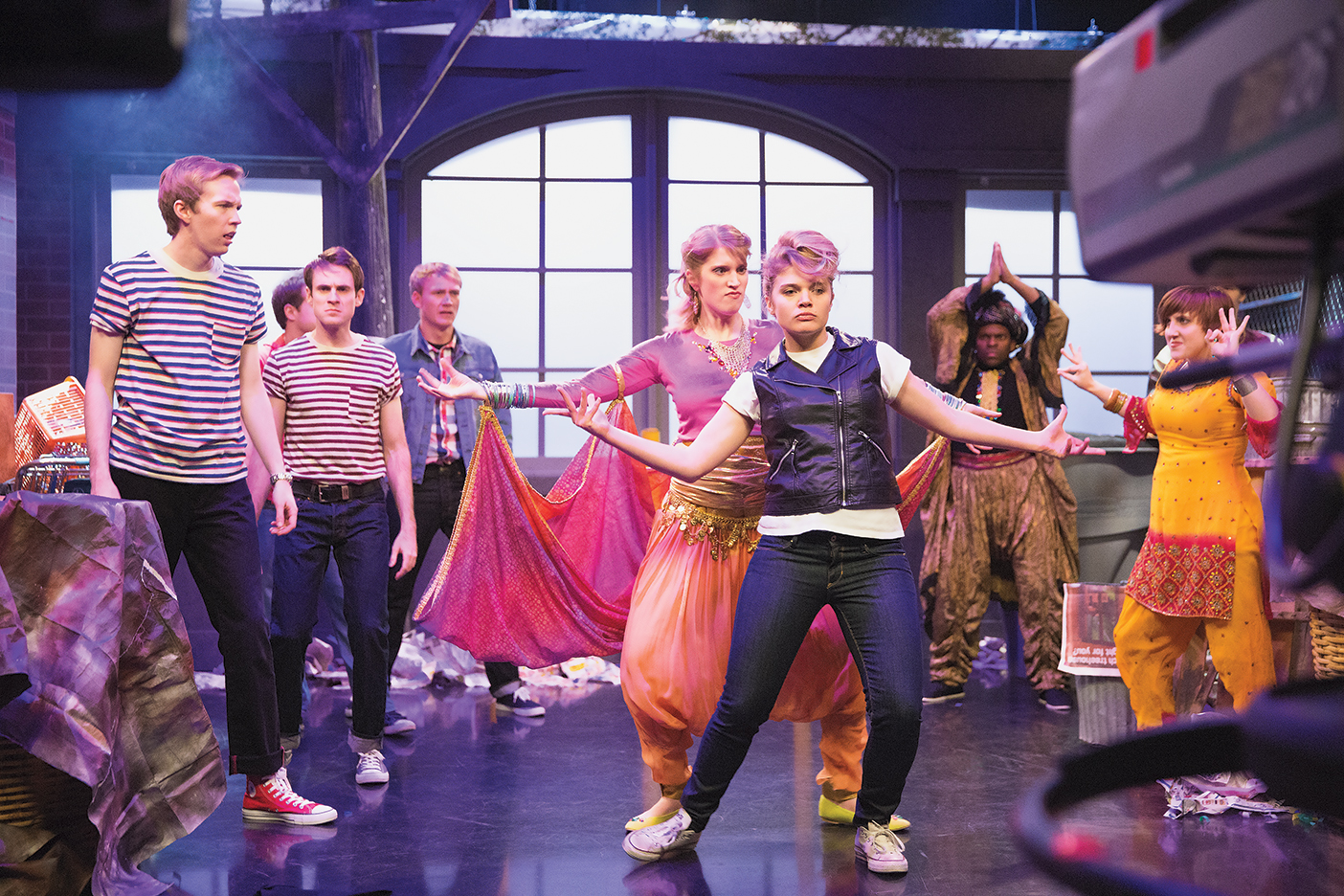
Better. Way better. An autographed picture of the cast of Studio C, with Studio C T-shirts. True story.
“My favorite part was the 9-year-old screaming, ‘I’m going crazy!’” says cast member Mallory R. Everton (BA ’12), doing a melodramatic (you’d expect nothing less) impersonation of the child.
The parents captured the scene on video and sent it to the cast as a thank-you. The children’s mother, Colby Cole Warnock (BA ’98), had contacted Studio C for the picture after their discussions about an upcoming family vacation took an unexpected turn. The parents offered to use Christmas money to take the family to Hawaii. The kids countered with an offer to go to Provo to see a taping of Studio C instead.
“Instead of changing our plans, I wondered if maybe we could just get your autographs?” wrote Warnock in her request to Studio C. “Seriously, they would go nuts.” That they did.
As Studio C is the most viewed of BYUtv’s original shows (counting online views), perhaps it’s not surprising to find fans like this. Studio C has a unique spot in BYUtv’s primetime lineup. Amid dramatic miniseries, documentaries, and rockumentaries, Studio C is decidedly lighter. It is a sketch comedy show born out of the Divine Comedy troupe on campus. Think Saturday Night Live, but a version you’d watch with your kids and your mom. Each episode consists of three to five sketches filmed in front of a live studio audience, peppered with some pre-recorded bits. With a new season starting in April, fans can expect to see more of Mustache Man and Shoulder Angel and to meet several new characters.
For BYUtv executives, the show fits right in. “Humor is a vital part of the human experience, and laughing is fun,” says Jared N. Shores (BS ’10), Studio C producer and creative-development supervisor for BYUtv.
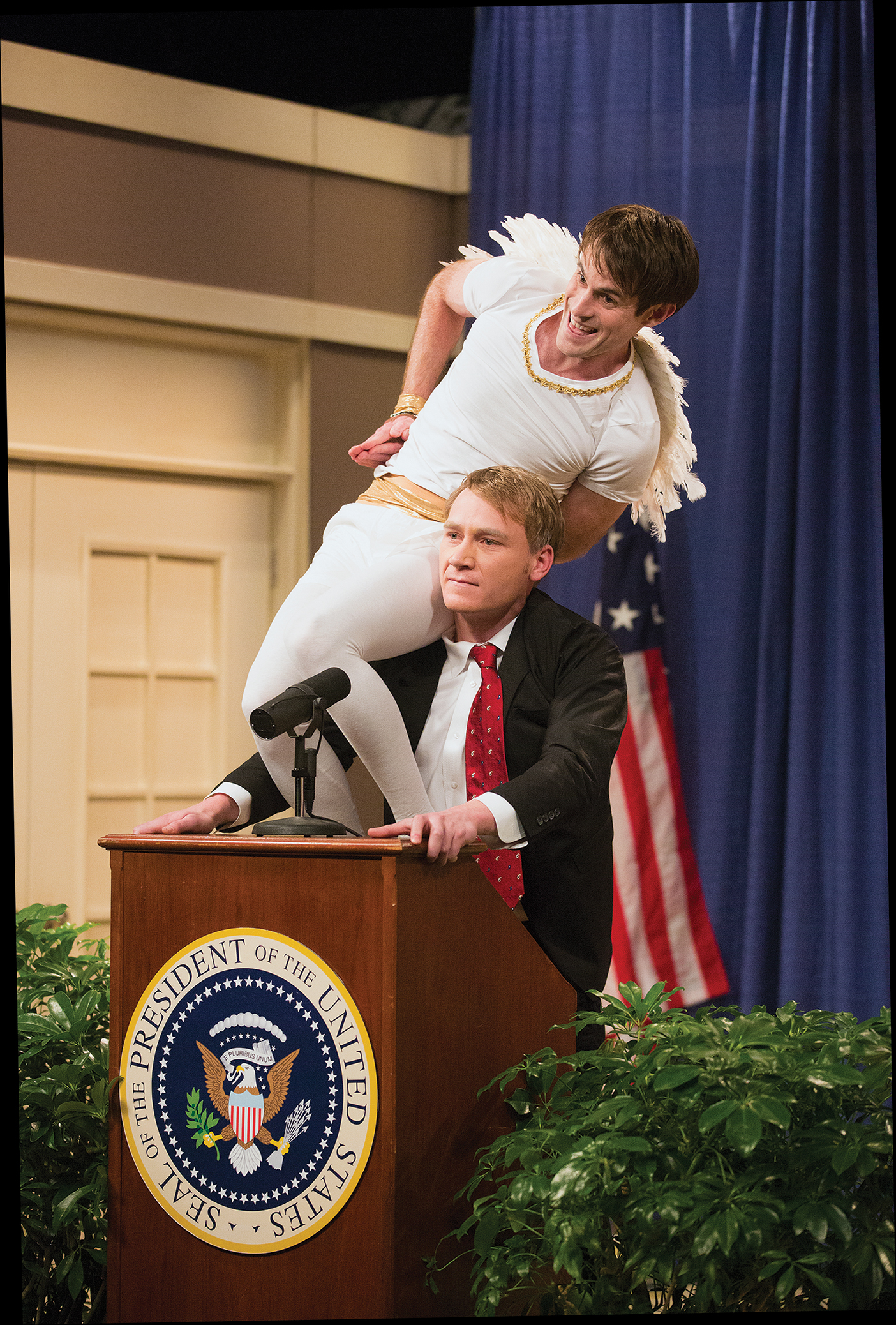
Cocreator and cast member Matthew R. Meese (BS ’09) approached BYUtv with the idea of creating the comedy series when he was a student performing in Divine Comedy. He and Shores worked for a year refining the concept, logistics, and budget until they had a show ready to air.
If the tagline for BYUtv is “See the Good in the World,” then the tagline for Studio C might be “See the Humor in the World.” Ten episodes with more than 4 million views among them suggest the world likes a little humor.
“I think that’s what comedy is: seeing the good in everything,” adds cast member Whitney M. Call (BA ’11). “Comedy is a celebration of what you experience in life. Why wouldn’t people keep coming back to that?”
Video: See the Warnock family opening their Studio C Christmas gift below.

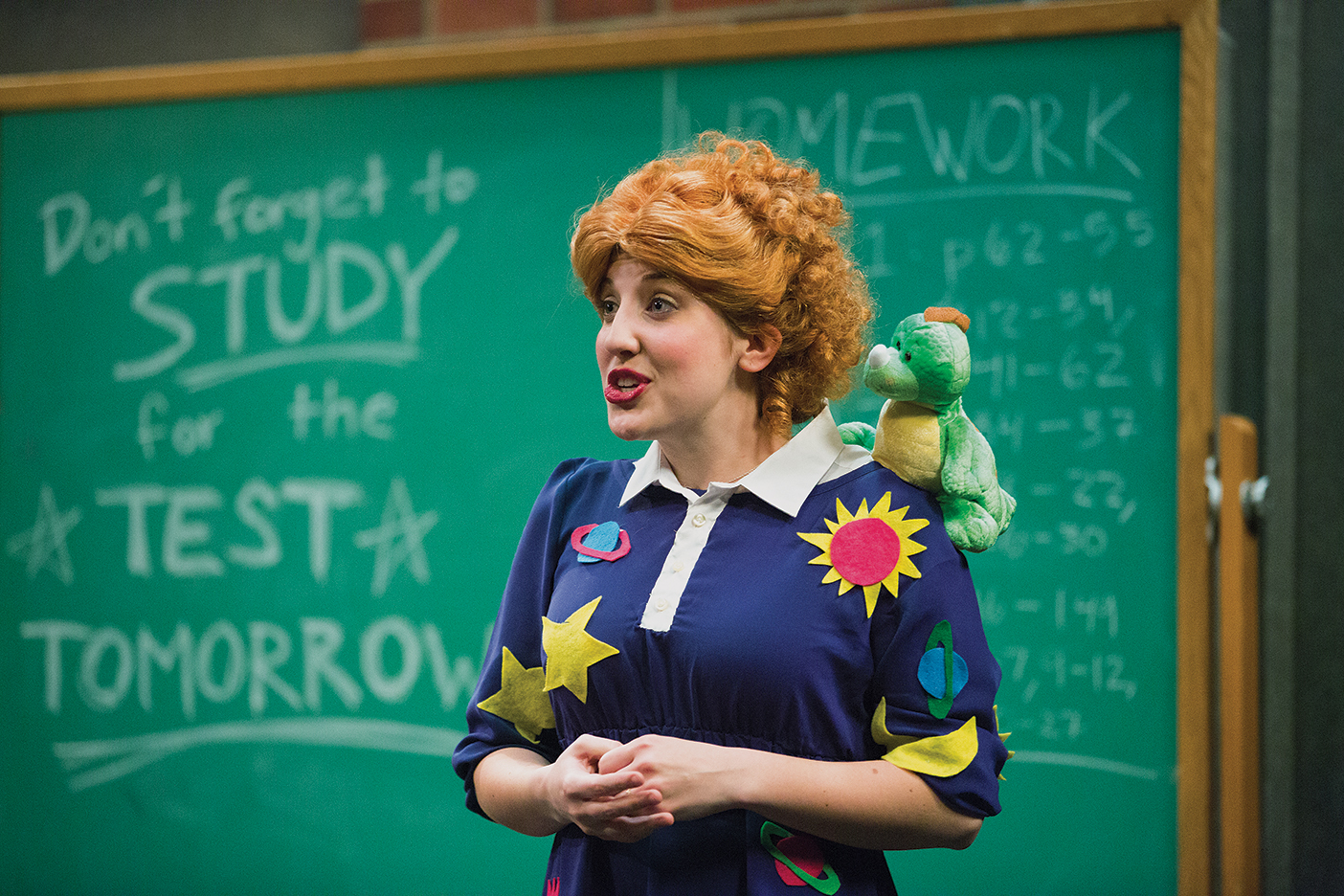
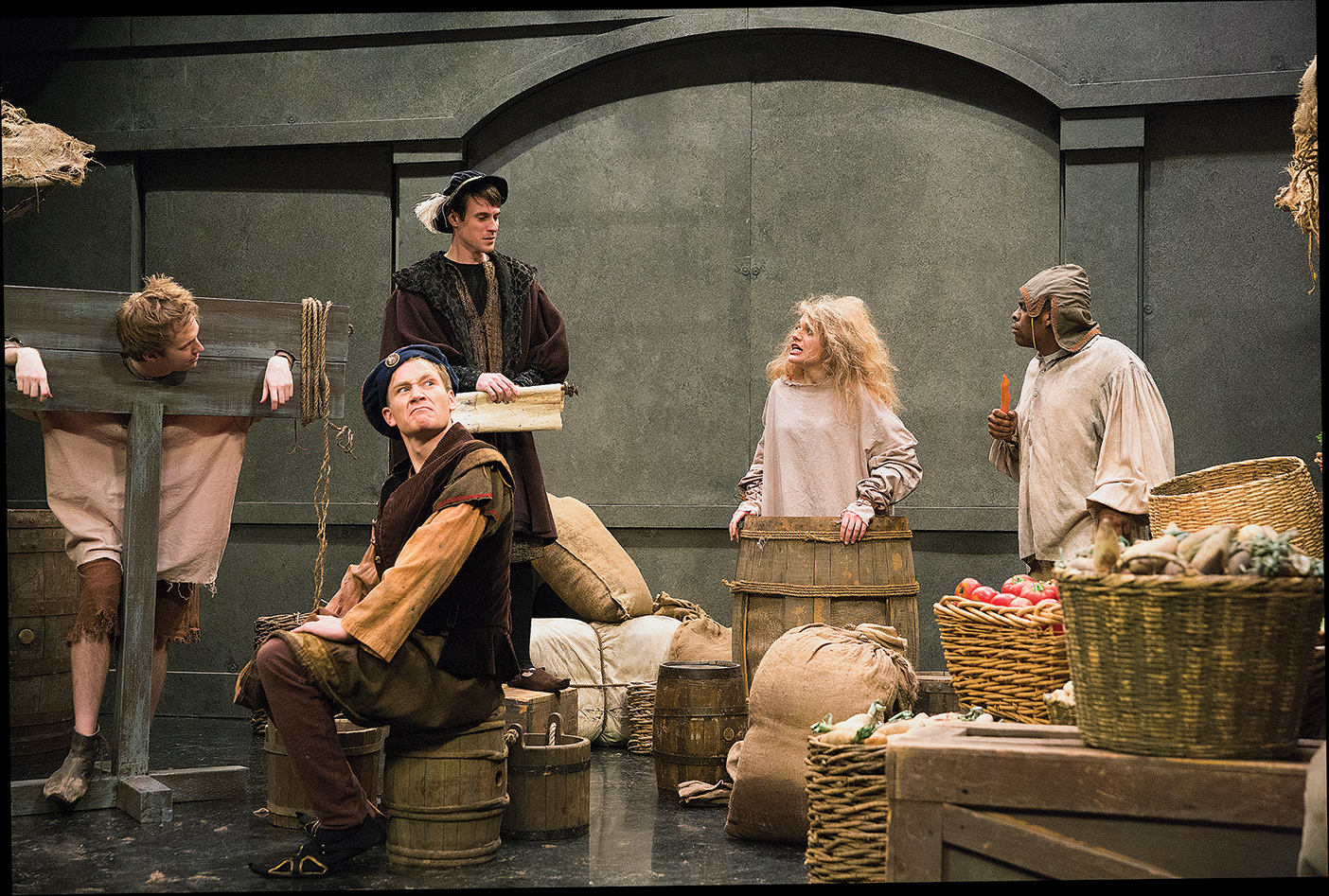
Audio Files
Under Tones
Alan Sparhawk of the indie-rock band Low told the BYUtv crew to focus on his bandmate and wife, Mimi Parker. He was just going to check his guitar and amp. He wasn’t going to play. They could get Mimi at the piano.
They were at the Sacred Heart Music Center in Duluth, Minn.—an old church with dramatic arches and columns and stained glass. Sparhawk and Parker had suggested it as a lovely place to film.
Parker starts to play, vamping the same simple descending chord progression on the grand. Then she sings. It floats high and clear. Sparhawk is walking around with his guitar, not looking. Pacing, fingering chords. Just waiting in the background.

“Once I was lost,” Parker sings in a folksy, Carly Simon voice. Her voice and the piano and their reverberation fill the chapel. The acoustics are great. The crew is filming, but no one is miked. They’re just catching the natural sound in the space.
Sparhawk is looking away. But suddenly he sings. His tenor voice, equally folksy, echoes harmonically above, just for three notes. Then he waits. He echoes again and then again and then again. She continues to sing and play and he continues to punctuate her song with just enough harmony and a little electric guitar. They almost never look at each other. They just listen and sing.
“Musically, it was one of the best moments we’ve had,” says Audio-Files creator and producer Matt Eastin. “It wasn’t one we ‘produced.’ It just happened.”
It’s these moments Eastin lives for and most certainly creates Audio-Files for.
“I wanted to make the music show I wished was already on MTV or VH1. There are no music shows anymore,” says Eastin. He refers to highly produced singing competitions or highly staged inside-the-life shows. Eastin just wanted a show that was beautifully filmed and simply real. Real music. Real musicians. Real lives.
Like the morning they met with Mates of State, also a husband-and-wife team. The crew arrived at their home about 8 a.m. for a glimpse into the real life of rockers.

When they arrived, Mom was at the table going over their daughter’s homework. Dad was making lunches. When it was time to go, they loaded up in the family minivan and took the girls to school. “Especially when they’re babies, you find yourself in some very un-rock-and-roll-like situations,” Jason Hammel tells Eastin and his crew from the driver’s seat.
To create the show he wishes was already on TV, Eastin chooses bands he’d want to see on that show. In the first season, they caught bands like Neon Trees and Imagine Dragons just as they hit the radar. Some bands are rock and some are bluegrass. Most are independent, and all are bands you will want to know—if you don’t know them now.
As bands have been featured on the program, more bands want to be featured, points out Eastin. “Some of the bands have offered referrals to other bands, which is a great compliment,” Eastin says. He and his team have also caught the attention of industry insiders, like a pair of brothers in Las Vegas who manage bands, including Imagine Dragons and The Killers. They have been instrumental in helping Eastin engage musicians.
If you ask what a show like Audio-Files is doing on a channel like BYUtv, Eastin sees an obvious fit. “Music is very generically called the universal language,” he says. “The music [these bands are] creating is beautiful.”
And that’s good enough.
Video: See Low perform “Point of Disgust” below.
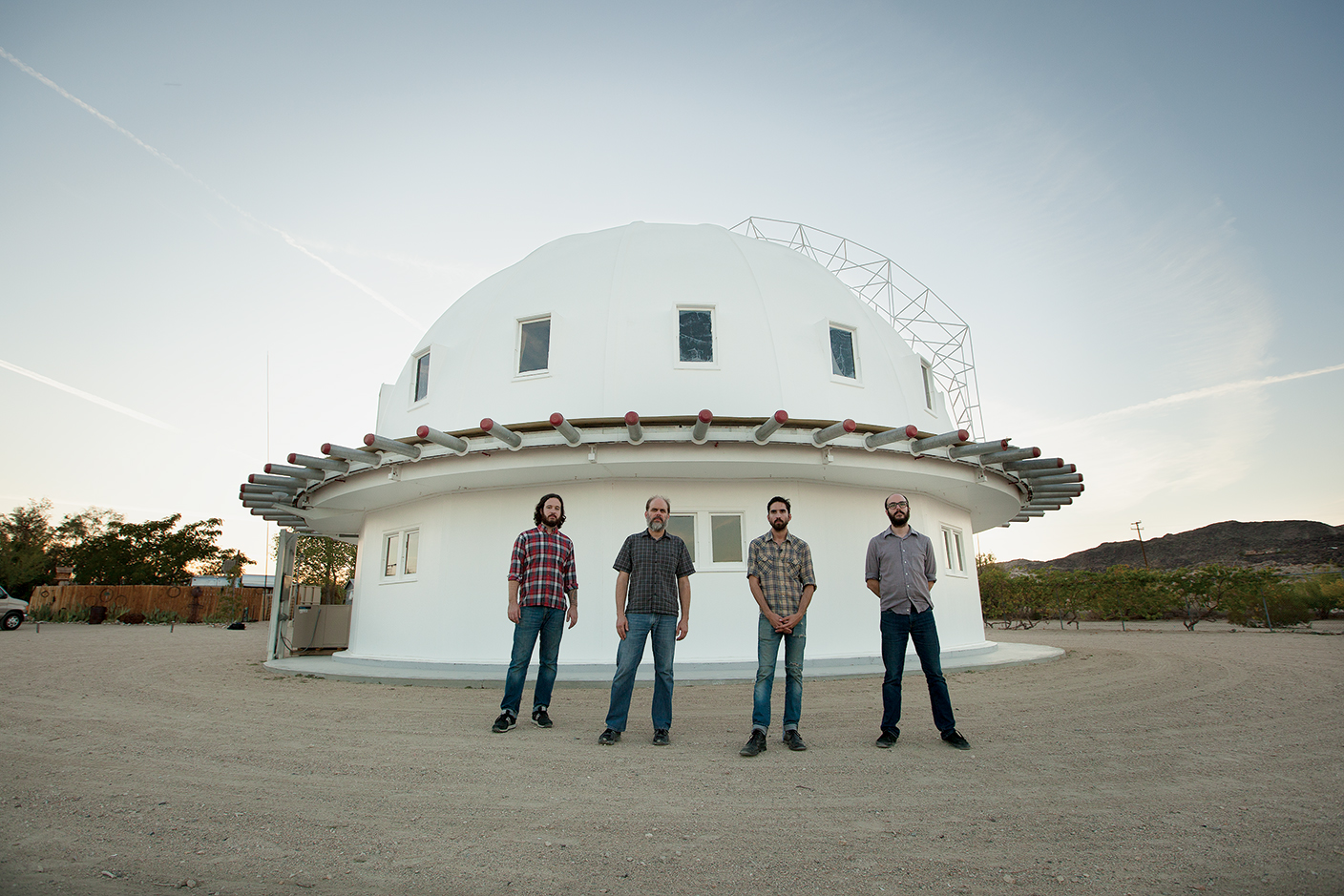
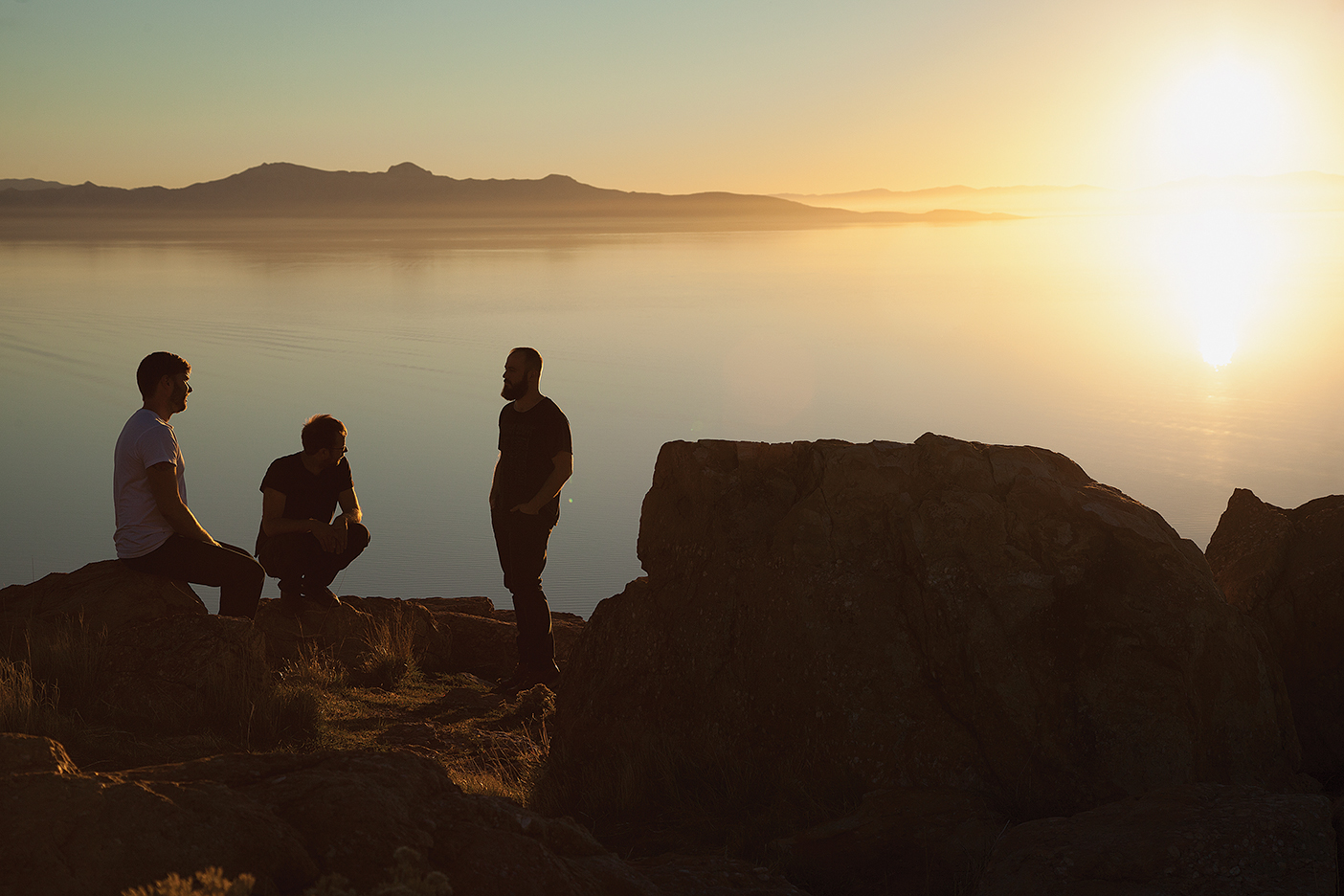
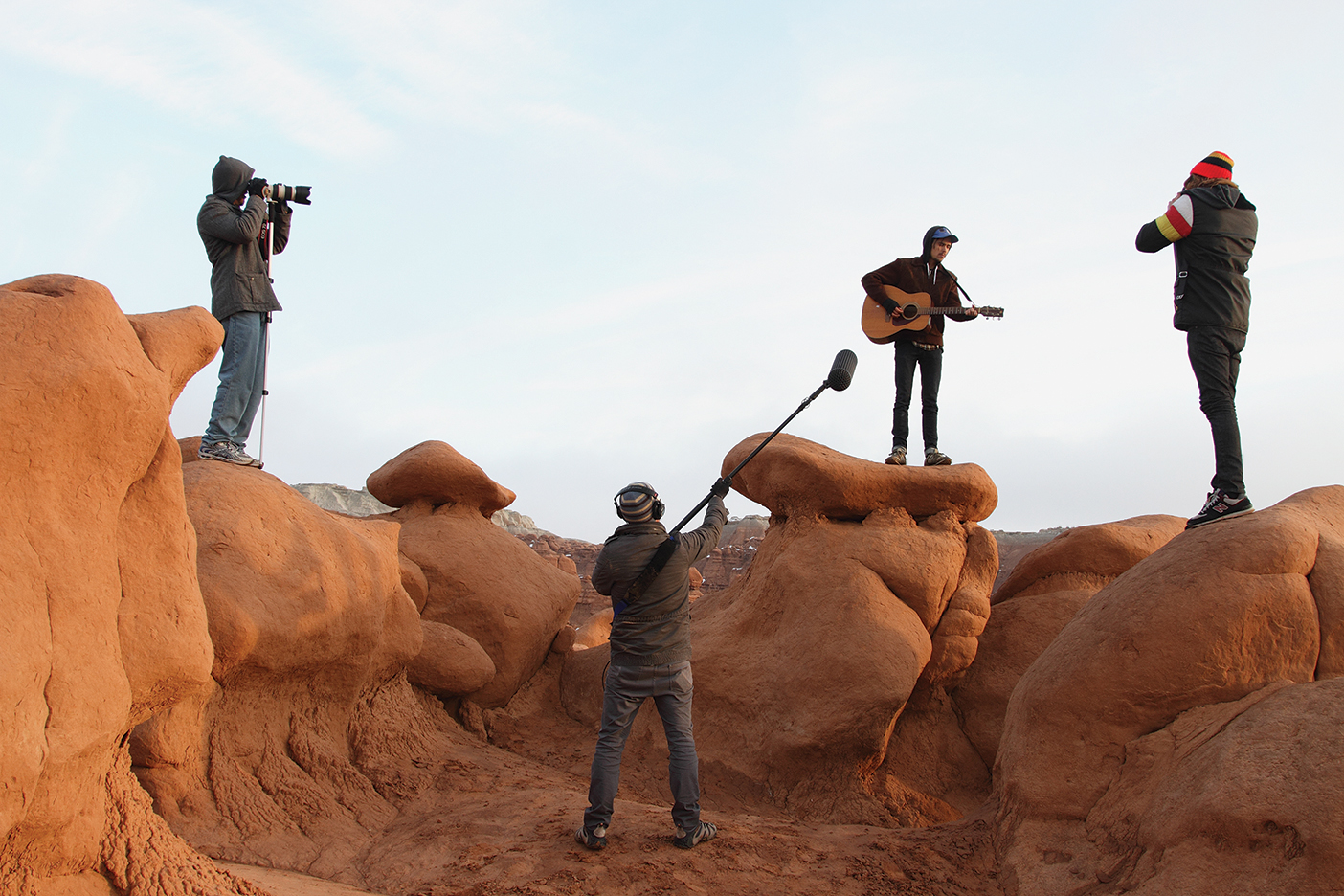
The Story Trek
A Story to Tell
It’s the last shoot of the season, and the crew is lined up on tall chairs. They’re squirming just a little bit. They’re not usually in the hot seats. They’re usually behind the cameras.
But today they are the ones telling stories. At this shoot, the six-person crew of The Story Trek is in a cozy lodge revisiting stories they loved and moments they hope to forget. Their first Emmy sits on an end table next to them.
When creator and host Todd M. Hansen (BA ’93)—ever the interviewer—asks his team for their scariest moment this season, director of photography Eric Gaylord is quick to respond: “Right now.”
But they soon relax and it becomes apparent they don’t just love their jobs but they believe in their task: find people and tell their stories.
“Everybody has a story to tell,” Hansen is famous for saying. He believes that in his heart and soul, and he proves it by trekking across the country to random places, knocking on random doors, inviting himself in, and asking for a story.
Of course not everyone lets them in, and some have chased them away with baseball bats and guns. But if you say yes to Hansen, you are featured on the show. Your story may be as simple as the girl who has always planned to be famous on TV—although she seems pretty nervous now that she has her big chance—or may be as profound as a life of abuse and the peace of forgiveness.
“Every story is of worth,” says Hansen. “I get e-mails from all over the world saying, ‘That particular story touched my life. It helped me get through the particular thing I’m going through.’”
And that’s why he does it. So as Hansen always says, “If you don’t think you have a story, please answer your door and let us prove you wrong.”
Lisa Ann Thomson is a freelance writer and editor living in Salt Lake City.
Feedback: Send comments on this article to magazine@byu.edu.



